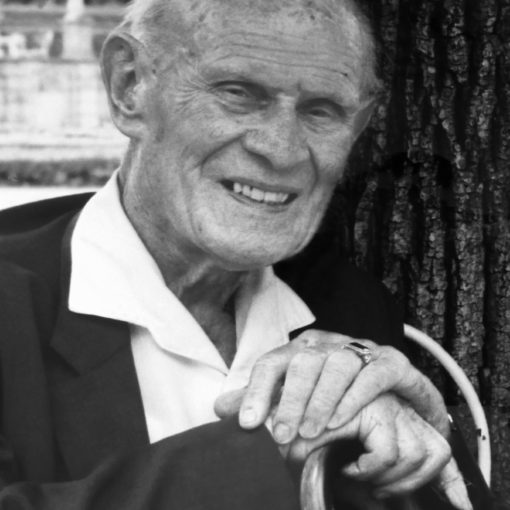Historian, diplomat, Minister of Foreign Affairs and a Freemason. That is how the personality of Kamil Krofta, one of the important members of the Národ Lodge, could be described.

Kamil Krofta was born in 1876 as a son of Josef Krofta, the first Czech mayor of Pilsen and a noted politician. Despite the fact that his name is most associated with the position of Czechoslovak Foreign Minister, he was not inclined towards politics and diplomacy at first. After graduating from the Pilsen grammar school, he entered the Faculty of Arts of Charles-Ferdinand University in Prague, where he focused on the study of history under the guidance of Professor Jaroslav Goll. He also studied the same field in Vienna. In 1899, immediately after graduation, he was sent as a scholarship holder to study texts with bohemian parts in the Vatican archives. Following the brilliant elaboration of a five-volume edition of these historical sources, he earned a place in the Archives of the Czech Lands in Prague, where he worked for eleven years until 1912. After that, he began to give academic lectures after his appointment as a professor of Austrian (and later Czechoslovak) history.
He entered diplomacy in 1920 at the initiative of the then president T. G. Masaryk. During this period, he is also admitted to the newly formed Národ Lodge. His first diplomatic mission took him back to a place, where he gained experience as a scholarship holder after his studies, the Vatican City. He then worked as the Czechoslovak ambassador to Austria, where he actively participated in the development of cooperation between the two successor countries. His last mission before returning to Prague was an ambassador to Germany, where he assisted Foreign Minister Edvard Beneš in concluding agreements in Locarno, Switzerland, or in negotiating the entry of the Weimar Republic into the League of Nations.
Upon his return from Germany, he became Deputy Foreign Minister, where he acted as coordinator of the ministry’s operations and led a number of important meetings. In this position, he again used his experience from the Vatican City and presided over the talks on the so-called modus vivendi with the Vatican City, a convention signed in 1928. He also contributed to the implementation of the Czechoslovak port area in Hamburg. He remained Deputy Foreign Minister after Edvard Beneš became president and newly appointed Prime Minister Milan Hodža temporarily took reins of the ministry. However, his duties increased further as Hodža was fully occupied with his role as Prime Minister, and therefore Krofta was officially appointed Minister of Foreign Affairs in February 1936.
Despite the fact that Kamila Krofta’s name is known in society primarily thanks to this position, this period was not very successful for him. As head of diplomacy, he tried to strengthen the international position of the country, but most of his initiatives failed. As the role of the president in determining and directing foreign policy increased significantly at that time, Krofta became more an executor of President Beneš’s decisions. This led him to a fateful moment in Czechoslovak history, when he eventually shared the belief that it was necessary to accept the terms of the Munich Agreement. Shortly after the abdication of Edvard Beneš as President of the Republic, Kamil Krofta resigned as Foreign Minister.
After the occupation of the Czech lands, Krofta returned to his original field of interest, which was history. During the occupation, he wrote many national-defense historical essays, including the publications Dějiny československé (The History of Czechoslovakia) and Nesmrtelný národ (The Immortal Nation). Krofta’s publishing activity developed throughout his life. His initial works are focused more on religious topics in the Hussite period of Czech history, for which he drew information in the Vatican archives (Kurie a církevní správa zemí českých v době předhusitské/Curia and ecclesiastical administration of the Czech lands in the pre-Hussite period, Bílá hora/White Mountain, Boj o konsistoř podobojí v letech 1562-1575 a jeho historický základ/The struggle for a consistory in the years 1562-1575 and its historical basis, etc). While working in diplomacy, he wrote popularizing articles that symbolically connected his two disciplines, namely history and diplomacy. These include, for example, the articles about Modus vivendi, Haag a Paříž (The Hague and Paris), and articles about T. G. Masaryk.
His resignation as Foreign Minister did not mean a mere retreat from a public area. During the war, Krofta was an active member of the non-communist anti-Nazi resistance. In 1943, he even became one of the leaders of the Preparatory Revolutionary National Committee, in which other Masons, such as Jaroslav Kvapil, František Richter and Emil Lány, also took an active part.
However, at the beginning of 1944, Kamil Krofta was arrested and imprisoned in Terezín and later at the Jenerálka chateau. He was released at the end of the war, but a year and a half of his hardship in prison had a strong effect on his health, which led to his death as a consequence of his suffering in 1945.
For his work in the field of history and archiving, he earned membership in the Czech Academy of Sciences and the Royal Czech Society of Sciences. He was also awarded for his diplomatic work – in 1938 he became a Knight of the Order of the Hospital of Saint John of Jerusalem and the Order of the Holy Sepulchre in the Grand Priory of Bohemia and Austria.
Despite a not very successful period as Minister of Foreign Affairs, Krofta was one of the most important personalities who were at the beginning of not only the formation of Czechoslovak diplomacy, but also of Czechoslovak Freemasonry and our Národ Lodge.
Delivered by Bro. David Ř. on 1 January 6022



